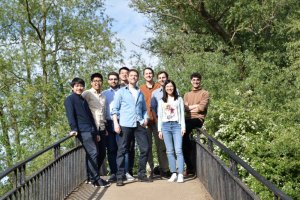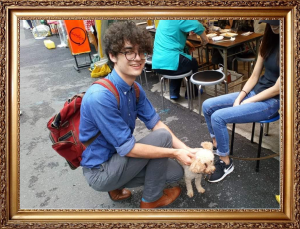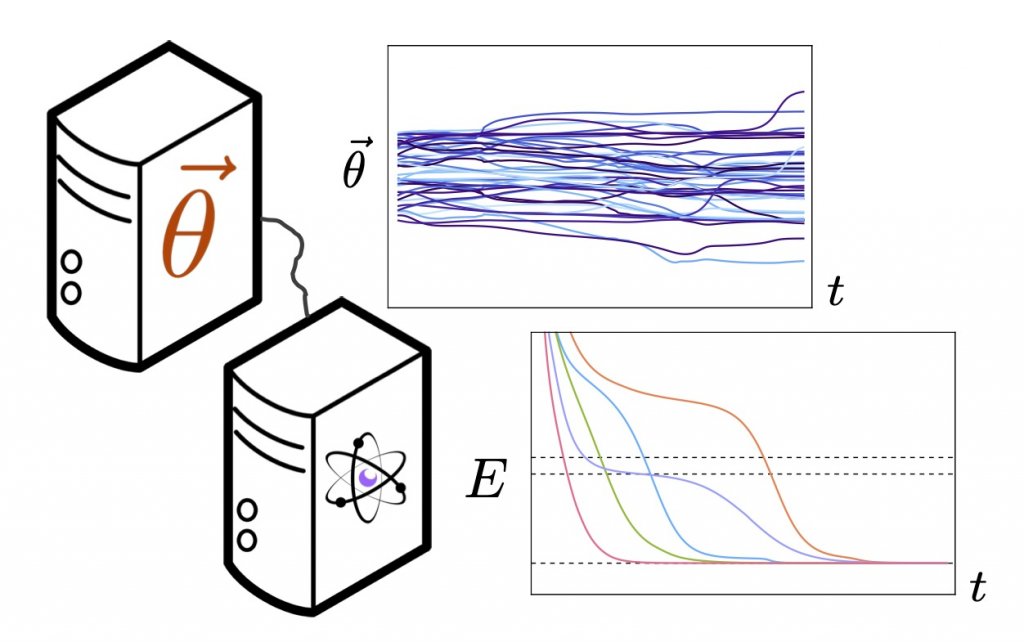Scientific computing and Noisy, intermediate scale quantum (NISQ) machines
On 10th February 2021, we had the privilege of hearing from Prof Simon Benjamin’s QTech Theory group from the Materials Department at the University of Oxford. Their Quantum Exact Simulation Toolkit, QuEST, is the first open source simulator of universal quantum circuits to offer hybrid, multithreaded, distributed and GPU accelerated use, in one package.

The C library was benchmarked on supercomputers ARCUS and ARCHER and demonstrates excellent scaling, against other simulators, allowing for as many qubits as we have the memory for. The group have also created a mathematical interface, the Mathematica package QuESTlink, an emulator for easy deployment of our own code.
Tyson Jones explained that classical emulation of state vectors and density matrices plays a key role in the design of robust quantum algorithms and performance evaluation of current Noisy Intermediate-Scale Quantum (NISQ) devices for solving graph optimisation, linear algebra and variational problems amongst many others.

The basic unit of quantum computers, the qubit, represents a two-dimensional vector in Hilbert space, between the classical bit values 0 and 1. Keeping track of the quantum state is demanding. A quantum register grows exponentially with the number of qubits, as opposed to linearly classically. Even our best classical computers cannot simulate 50 qubits, which is well behind current quantum devices possible, therefore the need for high performance classical computing is increasing for classical emulation.
Tyson described quantum circuits as series of unitary transformations, known as quantum gates, acting on the state vector. For calculation speedup, the state vectors and operations are partitioned and communicated between processes. Due to the buffer limits, nodes cannot support more than one qubit, leading to message latency for many shorter messages and the size of the circuit is limited. QuEST achieves very good parallel scaling using asynchronous communications and for the first time, assisted by GPU acceleration, allowing any-qubit controlled gates.
Dr Balint Koczor then showed how adjusting a quantum circuit can lead to solving common problems, for example the variational quantum eigensolver to find the ground state energy of a molecule. Defining the exact energy surface is classically intractable, leading to optimisations getting stuck in local minima, therefore popular quantum algorithms such as natural gradient descent are preferred, however, precision of vanishing gradients near the minima is limited by shot noise. The group proposed Quantum Analytic Descent, which maps a quadratic number of circuit parameters to a local polynomial approximation of the energy surface, to save on some of the quantum work. This hybrid approach achieves the local minimum in one step of a classical optimisation routine, saving thousands of steps in generic gradient descent which relies on point-wise information.

Another example of classical simulation with transferability to quantum devices are of quantum metrology experiments, for estimating a measurement of entangled quantum states. Balint and Simon compared noise models and relaxed the permutation symmetry of the probe states to find optimal states beyond the known symmetric states and the effects of noise.
Balint introduced costly quantum error correction to finish with, and how cheaper quantum error mitigation techniques can help us. The current imperfect qubits available are practically useful if we can reverse the effects of noise, using Noisy Intermediate-Scale Quantum (NISQ) algorithms. This involves repeating measurements to reduce uncertainty of expectation values. Alternatively, Balint has proposed the Error Suppression by Derangement (ESD) approach which provides exponential error suppression over increasing qubits unlike other algorithms, operating on states to maintain permutation symmetry and filtering out noisy states which contribute to the expectation value.
With the recent demonstration of quantum supremacy by research groups in China and the US, simulator tools such as the open-source QuEST help to close the gap by making use of HPC, such that we can design bigger and better quantum algorithms for a range of fields. For more information about the group and to find all benchmarking and raw results, visit the group’s website QTechTheory.org, and sites QuEST.QTechTheory.org and QuESTlink.QTechTheory.org.
Written by an NGCM Student
